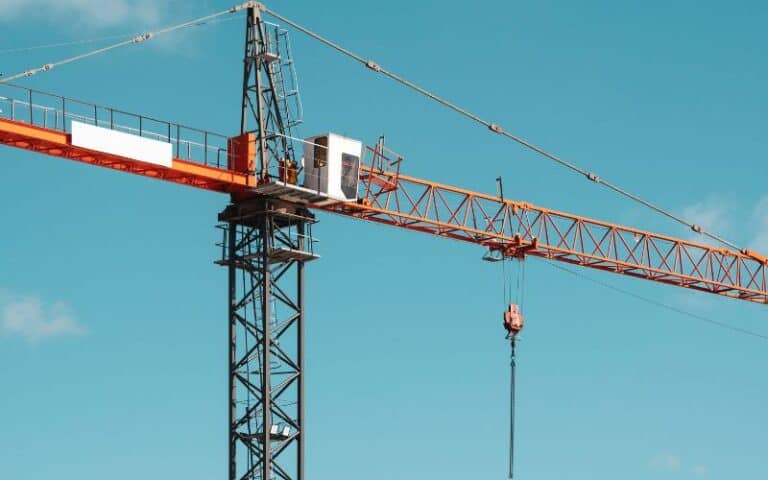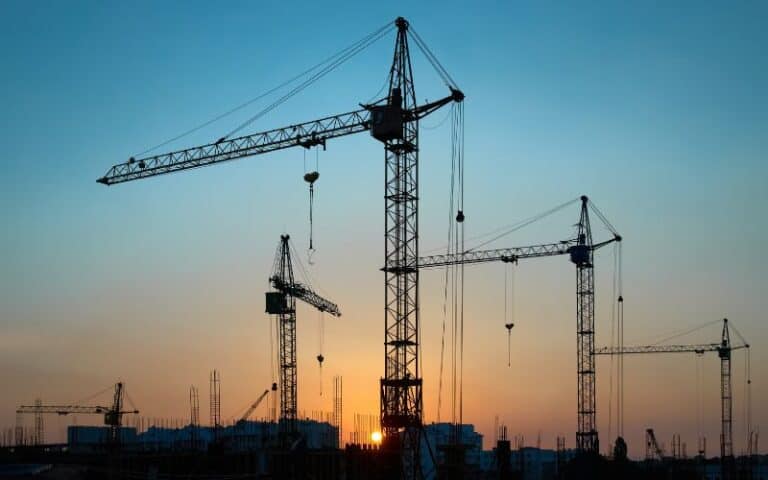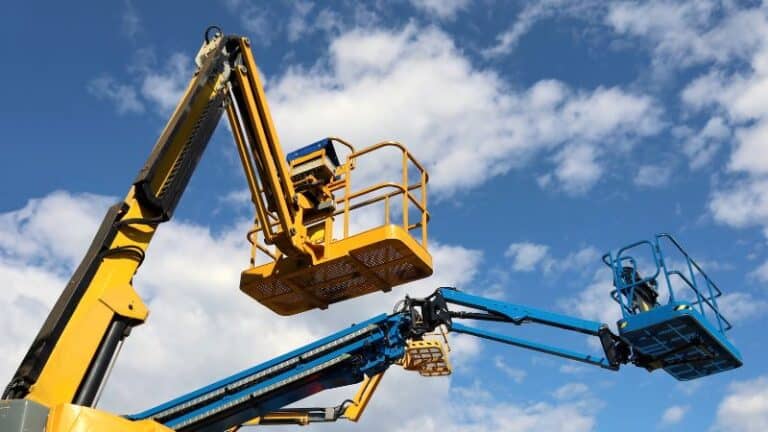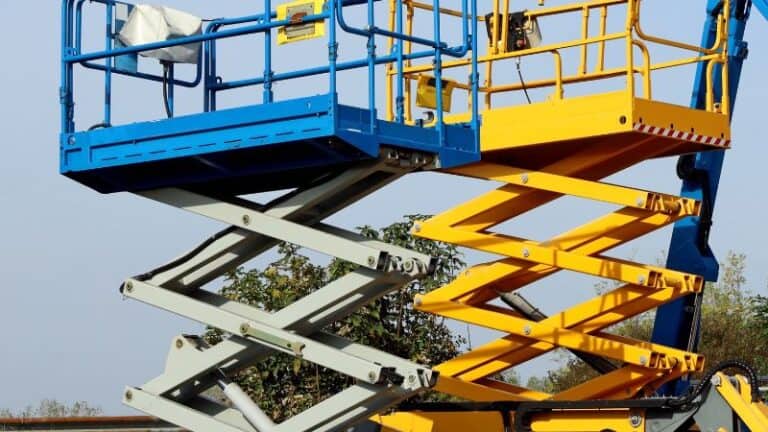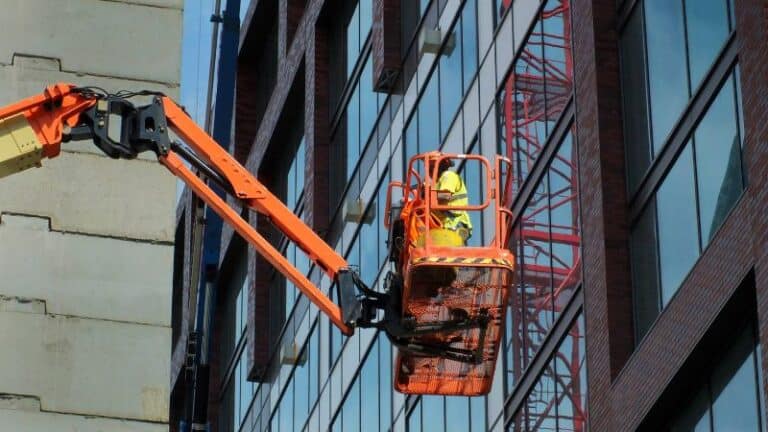Overcoming the limitations of traditional elevators, rack and pinion systems offer distinct advantages in terms of installation, maintenance, and performance. IHURMO’s rack and pinion elevators provide a safe, efficient, and cost-effective solution for various applications, offering a compelling alternative to conventional elevator technology.
Follow us and learn more about the benefits and discover why rack and pinion elevators are gaining popularity.
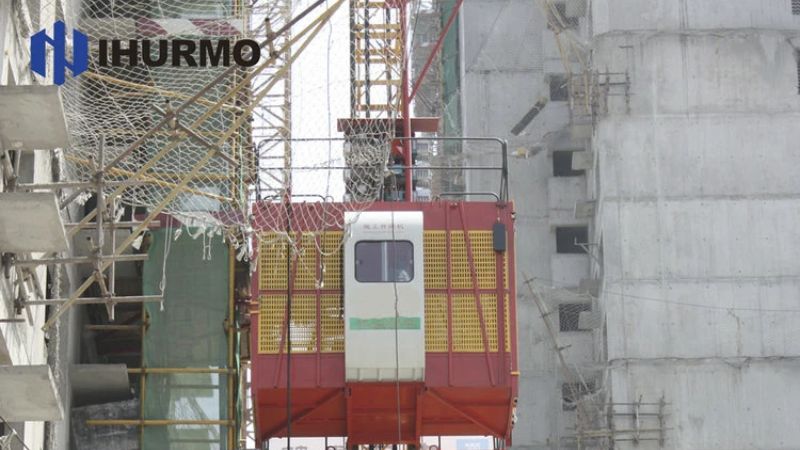
What are Rack and Pinion Elevators?
Rack and pinion elevators are a type of industrial construction elevator that relies on a gear system to move. They consist of a rack, which is a bar with evenly spaced teeth fixed onto the elevator shaft, and a pinion, a circular gear. The motor attaches to the pinion, and as it turns, the teeth of the gear engage with the teeth on the rack to move the elevator car up and down.
These elevators come in various types, catering to different loads and uses:
- Manlifts: Designed to transport personnel, typically in industrial settings.
- Material Lifts: For transporting goods and materials at vertical distances.
- Construction Hoists: Employed on construction sites for moving workers and equipment.
The Components of Rack-and-Pinion Elevators
Pinion Drive Gear Functionality
The heart of the rack and pinion elevator is the drive gear, also known as the pinion gear. It’s a round gear that engages with a fixed gear track or the rack attached to the elevator shaft. When the motor turns the pinion, it moves along the rack’s teeth, pushing the elevator up or letting it down. This is what moves your elevator car. For consistent performance, variable frequency drive technology may be used in modern systems to precisely control the motor’s speed and torque.
Why Rack and Pinion Elevator is a Safe Choice?
A safety device is built into rack-and-pinion elevators to ensure the lift stops if it goes too fast. It involves a pinion separate from the main drive gear that catches onto the rack if your elevator car exceeds a set speed. This device is designed to work even if the power or the main drive mechanism fails, bringing the elevator to a halt safely.
Automatic controls are also included to keep the elevator running smoothly and to adapt to different conditions. These controls manage the movement of the elevator car, ensuring it stops at the right floors and responds to your input from the control panel. Often, these systems use variable frequency drive technology, improving energy efficiency and providing a smoother ride by adjusting motor speed based on the car’s load and desired speed.
How to Install and Maintain the Rack and Pinion Elevator

Installing and maintaining a rack and pinion elevator involves several key steps to ensure safety and efficiency. First, prepare the installation site by ensuring it is clear and capable of supporting the elevator’s weight.
Assemble the components, including securely mounting the rack to a vertical structure and attaching the pinion gear to the elevator car, which connects to an electric motor. Next, the motor is connected to a suitable power source, and control systems are installed for operation.
After initial testing for smooth operation, necessary safety devices such as emergency brakes are installed, and a final inspection is performed before use.
For maintenance, conduct regular inspections at least twice a year to check for wear on moving parts and ensure safety devices are functional. Lubricate moving parts according to manufacturer specifications, clean the rack to prevent debris buildup and monitor performance for unusual noises or vibrations.
Seasonal maintenance is also important, particularly in extreme weather conditions. Keeping detailed records of all inspections and maintenance activities will help ensure compliance and facilitate future reference.
Benefits of Rack and Pinion Elevator Used in Industrial Applications
Rack and pinion elevators are crucial in boosting productivity and safety in various industrial settings. These elevators are crafted to suit the intense demands of industrial work, offering high efficiency and adapting seamlessly to extreme conditions.
Efficiency and Load Capacity
The industrial processes need efficient movement of materials or personnel, and this is where rack and pinion elevators shine. They can handle heavy loads efficiently, which is a must-have for your demanding industrial applications. Here’s how they help:
- High Weight Limits: Compared to traditional elevators, they can carry substantial weight, often required in industrial tasks.
- Consistent Performance: With rack and pinion, you get smooth and reliable operation, critical for time-sensitive industrial work.
Adaptation to Harsh Environments
Rack and pinion elevators are tough. They’re specially designed to withstand tough conditions:
- Resistant to Elements: Whether it’s dealing with dust, moisture, or extreme temperatures, these elevators are up to the task.
Special Purpose Elevators for Industry
Sometimes, you need a solution tailored just to your industry’s unique demands. Rack and pinion lift systems come in various configurations, including:
- Customizable for Specific Uses: From construction sites to power plants, they can be tailored to meet the specific needs of any industry.
Application of Rack and Pinion Elevator
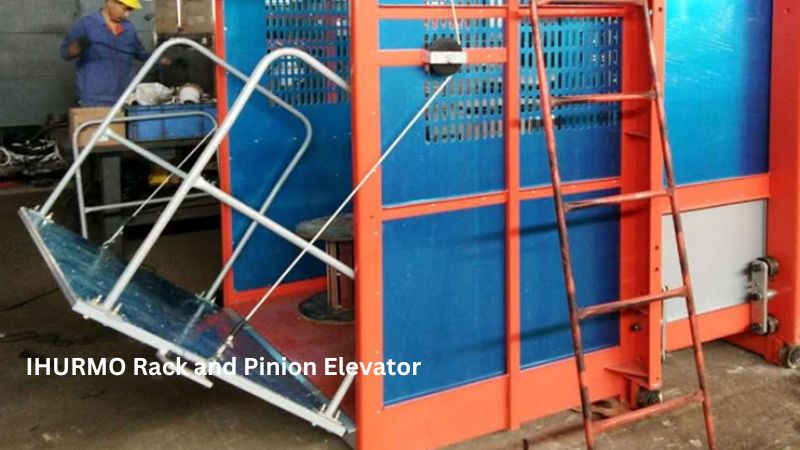
Rack and pinion elevators are key in moving people and materials vertically, especially where traditional elevators can’t be used. They are versatile and can be adapted for various industrial tasks.
For your high-rise projects, rack and pinion elevators act as construction hoists. Their sturdy design allows them to carry heavy loads, making them an essential part of any construction site. These elevators offer a safe and reliable way to navigate the vertical challenges of your project.
Rack and pinion elevators also provide solutions for vertical access at outdoor construction sites. They are particularly useful when there are no permanent elevator shafts. These systems are designed to withstand various weather conditions, making them ideal for outdoor use. You can see them in action as transport platforms when it comes to building bridges or power plants, allowing workers and materials to move up and down with ease.
Various industrial sectors make great use of rack and pinion elevators. Aside from construction, they are common in facilities like power plants and shipyards for their ability to offer high-capacity and durable vertical transportation. They are also used as industrial elevators for maintenance and service tasks, thanks to their customizable load capacities and ability to operate in environments where other elevator types may not be as effective.
Rack and Pinion Elevators are Temporary or Permanently Installed Elevator?
Rack and pinion elevators can be categorized as both temporary and permanent installations, depending on their application.
Typically, they are used as temporary construction hoists, ideal for moving personnel and materials during building projects.
These temporary models are designed for quick installation and do not require an enclosed hoist way, making them suitable for outdoor use on construction sites.
However, there are also permanent rack and pinion elevators that are installed in industrial settings, such as power plants or refineries.
These permanent installations are designed to meet specific safety standards and can operate without the need for a machine room or enclosed shaft.
IHURMO Double Cage Rack and Pinion Elevator for Construction
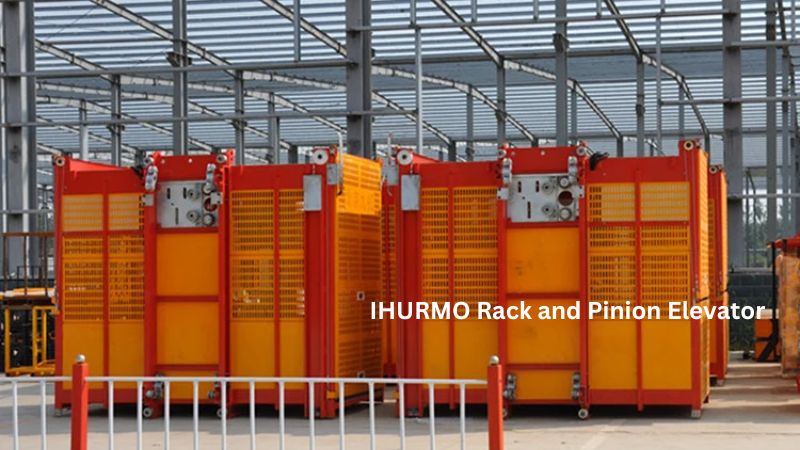
Designed to meet the diverse needs of modern infrastructure, our elevators and hoists combine advanced engineering with superior craftsmanship to deliver reliable, efficient, and safe vertical transportation solutions.
Key Features
- Versatile Configurations: Choose from single or double-cage cabins tailored to accommodate varying passenger capacities and building requirements. Our inverter models offer enhanced energy efficiency and smoother ride experiences compared to traditional systems.
- Advanced Inverter Technology: Experience reduced energy consumption and quieter operation with our inverter-driven elevators. This technology allows for precise speed control, ensuring seamless acceleration and deceleration for maximum passenger comfort.
- Robust Construction: Built with high-quality materials, our elevators and hoists are engineered to withstand the rigors of both passenger and construction environments. The sturdy design ensures longevity and minimal maintenance needs.
- Enhanced Safety Features: Safety is paramount. Our products include multiple safety mechanisms, such as emergency braking systems, advanced sensors, and advanced monitoring systems to ensure the utmost protection for users.
- User-Friendly Interface: Intuitive control panels and easy-to-navigate interfaces make operation simple for both passengers and maintenance personnel. Clear indicators and responsive controls enhance the overall user experience.
- Customizable Aesthetics: Tailor the appearance of your elevator or hoist to match your building’s aesthetic. Choose from a variety of finishes, lighting options, and cabin designs to create a harmonious look that complements your space.
Applications
- Residential Buildings: Provide seamless access for residents, enhancing the value and accessibility of multi-story homes and apartment complexes.
- Commercial Spaces: Ideal for office buildings, shopping centers, and hotels, our elevators ensure efficient movement of people and goods, contributing to a smooth operational flow.
- Construction Sites: Our construction hoists are perfect for transporting building materials and equipment, streamlining the construction process, and improving site safety.
If you are considering buying a rack and pinion elevator to meet your project, please contact us today.
Why Choose IHURMO?
With a commitment to innovation and excellence, IHURMO stands out as a trusted provider of vertical transportation solutions. Our expertise ensures that each elevator and hoist is meticulously designed to meet the highest standards of performance, safety, and reliability. Partner with us to elevate your projects to new heights.
For more information or to request a customized solution, visit our product page or contact our team today.
Frequently Asked Questions
What are the benefits of using a rack and pinion elevator compared to other types?
Rack and pinion elevators are known for their reliability and ease of installation. Unlike traditional cable elevators, they don’t require a machine room, saving space in your building. They are also very good for outdoor or industrial environments because they can withstand harsh conditions. Plus, their unique design makes them safer during a power outage; they come to a stop gently instead of dropping suddenly.
How do the costs of rack and pinion elevators compare with other elevator systems?
When looking at costs, rack and pinion elevators tend to be more affordable to install than standard elevators. They require less structural modification, which saves money from the start. Over time, their maintenance costs can be lower too, partly because they have fewer parts that can break down. However, the initial cost and long-term expenses can vary depending on the specific needs of your building and the elevator’s design.
Who are the leading manufacturers of rack and pinion elevators?
Several companies specialize in rack and pinion elevators, with well-known name in the industry being IHURMO. These manufacturers are known for their quality equipment and offer various models to suit different applications, from construction sites to commercial buildings.
What design considerations are important for rack and pinion elevators?
Designing a rack and pinion elevator involves looking at load capacity, speed, size, and durability. It’s important to make sure the materials used can handle the stresses of the environment they’ll be operating in. Additionally, safety features like manual descent and over-speed prevention are crucial. Comfort and stability for the users are also considered, especially if the elevator is for public or commercial use.

